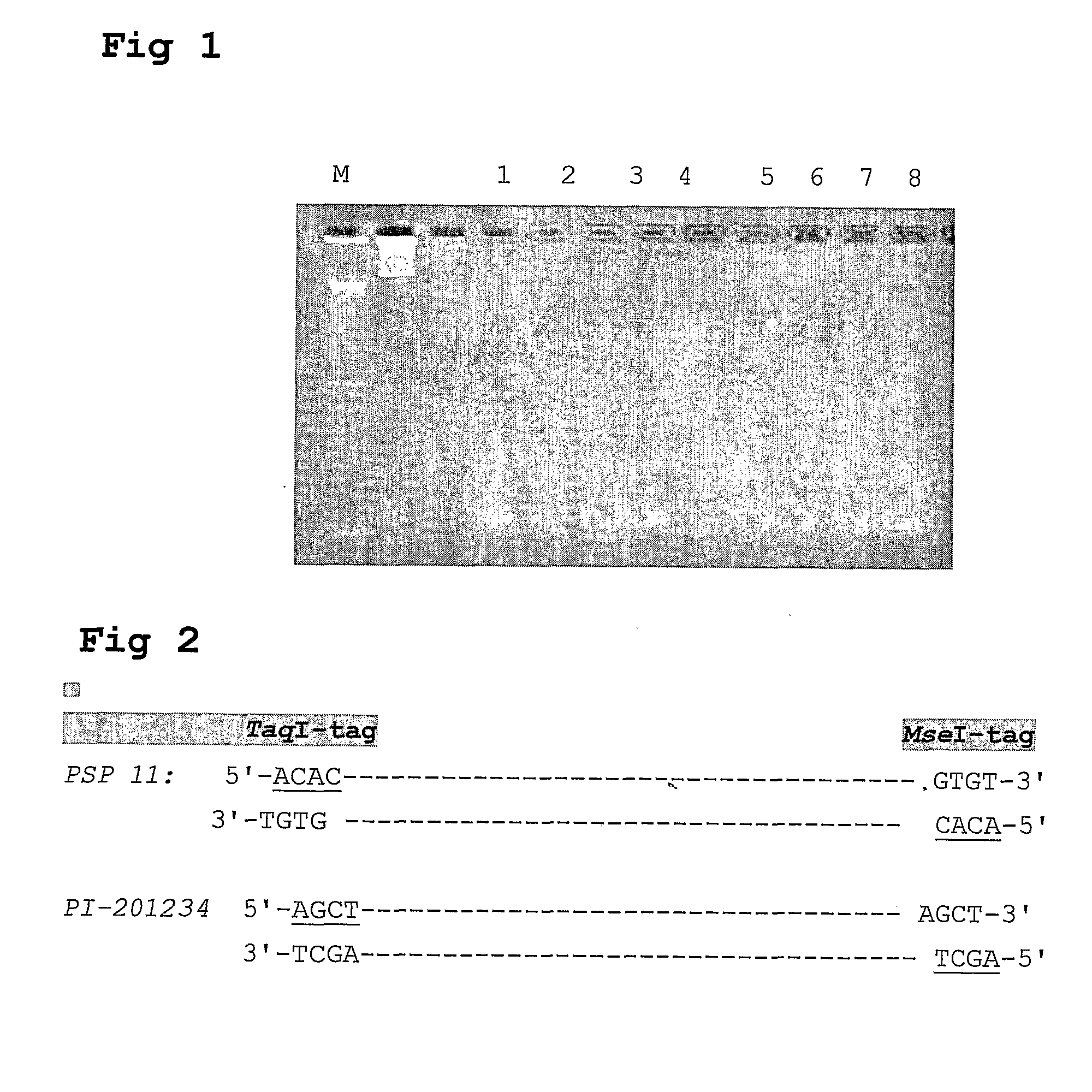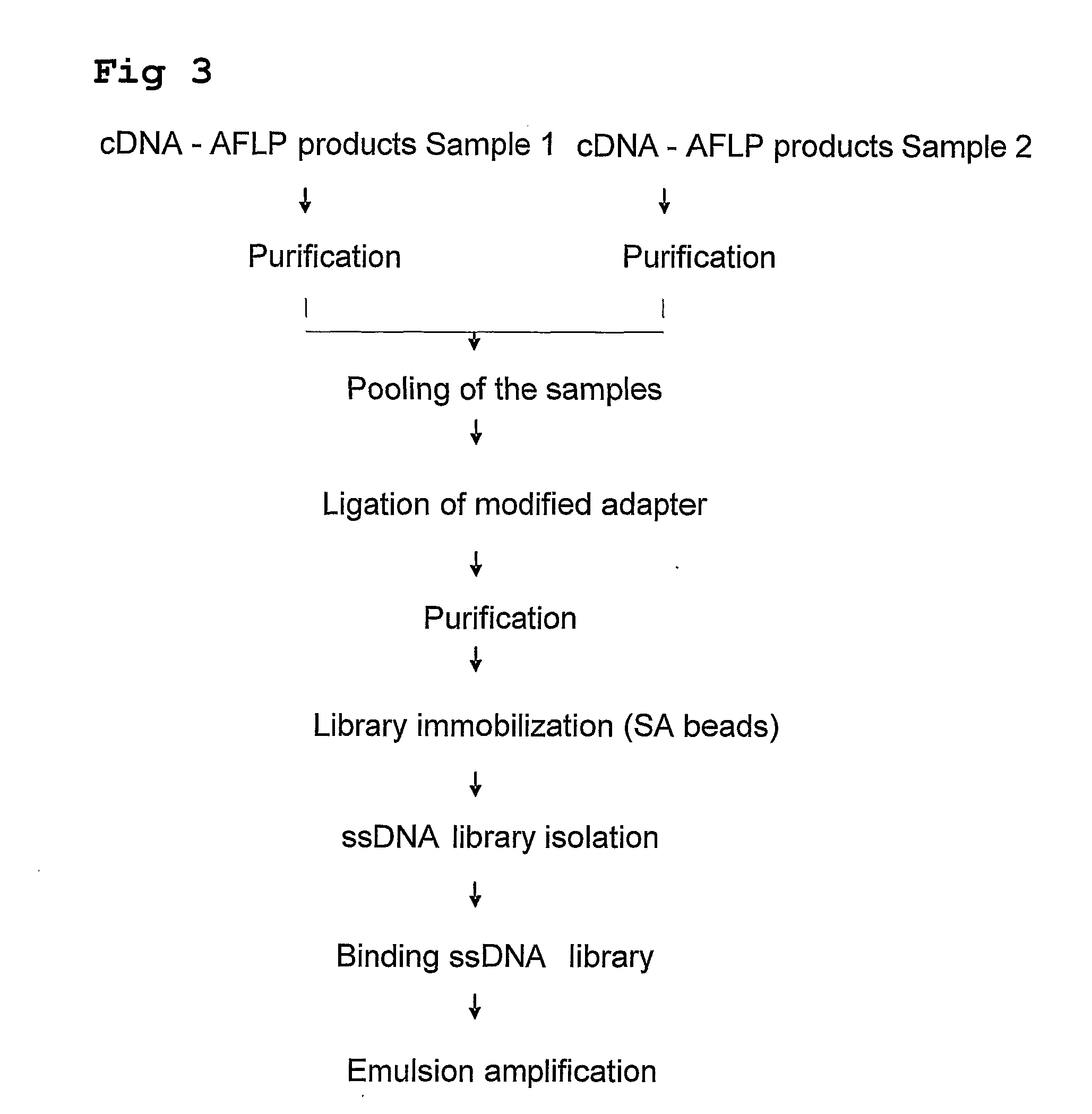Strategies for trranscript profiling using high throughput sequencing technologies
a sequencing technology and profiling technology, applied in the field of molecular biology and genetics, can solve the problems of low tedious and time-consuming procedures, and health hazards, and achieve the effect of improving the reproducibility/robustness of these techniques
- Summary
- Abstract
- Description
- Claims
- Application Information
AI Technical Summary
Benefits of technology
Problems solved by technology
Method used
Image
Examples
examples
[0151]A large number of examples of temporal and spatial regulation of gene expressions in higher plants have been accumulated using approaches such as Northern hybridization or DNA microarray expression applications. The latter technology allows the monitoring of expression of thousand of genes simultaneously. Unlike these methods of analysis, digital analysis of gene expression profiling can be achieved by sequencing tagged transcripts directly using high throughput sequence technologies. The number of sequences obtained from a specific transcript in a sample reflects the transcription level of this particular sequence. Comparing these numbers between multiple samples, while accounting for depth of sequencing, allow accurate measurement of transcription levels between these samples. This technology seems to be a strong tool for discovering new unknown quality markers which are related to certain expression profiles.
[0152]Here we describe the high throughput sequencing of cDNA, fro...
PUM
| Property | Measurement | Unit |
|---|---|---|
| Volume | aaaaa | aaaaa |
Abstract
Description
Claims
Application Information
 Login to View More
Login to View More - R&D
- Intellectual Property
- Life Sciences
- Materials
- Tech Scout
- Unparalleled Data Quality
- Higher Quality Content
- 60% Fewer Hallucinations
Browse by: Latest US Patents, China's latest patents, Technical Efficacy Thesaurus, Application Domain, Technology Topic, Popular Technical Reports.
© 2025 PatSnap. All rights reserved.Legal|Privacy policy|Modern Slavery Act Transparency Statement|Sitemap|About US| Contact US: help@patsnap.com



